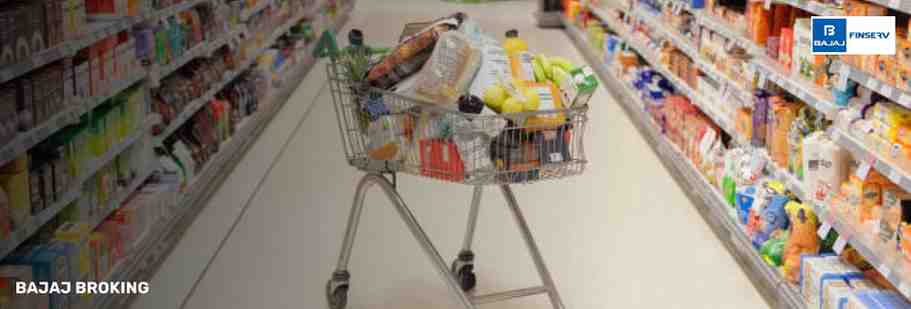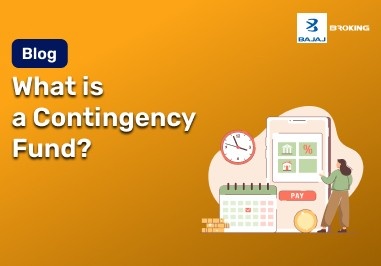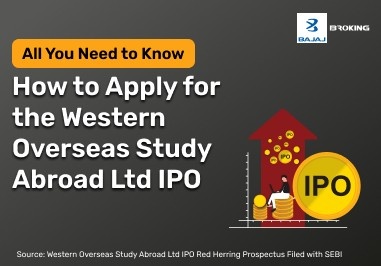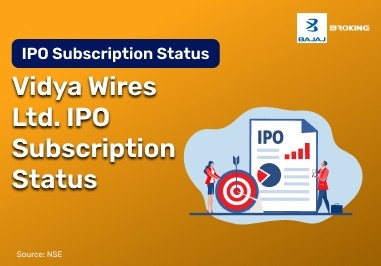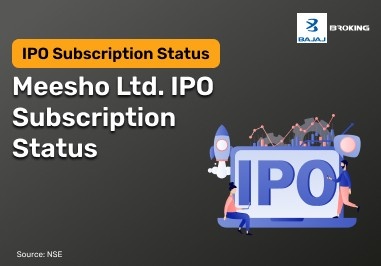The Fast-Moving Consumer Goods (FMCG) sector in India is a significant part of the economy, encompassing everyday products from personal care to packaged foods. As we observe the monsoon season, its influence on this sector becomes a point of interest. The monsoon, particularly the southwest monsoon, plays a role in India's agricultural output and, consequently, rural incomes and consumption patterns. Understanding how these seasonal shifts can affect the FMCG sector is helpful for those observing market trends.
The India Meteorological Department's (IMD) forecast for the 2025 monsoon suggests a positive outlook, with expectations of normal to above-normal rainfall across the country. Such a forecast can set a favourable backdrop for the rural economy. When agricultural yields are good, and farm incomes improve, rural consumers tend to increase their spending on a variety of goods, including FMCG products. This anticipated rise in rural demand can contribute to the growth of FMCG companies, particularly those with a significant presence in these markets.
Monsoon Impact on FMCG Sales Growth
The monsoon season has a direct and indirect impact on FMCG sales. Directly, sufficient rainfall is crucial for the Kharif crop season, leading to better agricultural output. Higher crop yields often translate into increased farmer incomes. This improved financial position in rural households can lead to greater purchasing power, influencing their spending on consumer goods.
Indirectly, a good monsoon can contribute to overall economic stability and sentiment. Lower food inflation, often associated with a healthy agricultural season, can free up disposable income for other purchases. This broad positive sentiment can permeate through both rural and urban markets, affecting the demand for various FMCG categories.
However, the impact is not uniform across all product categories. For instance, an early or strong monsoon might dampen sales of summer-specific products like ice creams, cold beverages, and certain skincare items, as cooler weather reduces their demand. Conversely, categories like packaged foods, personal care essentials, and household products typically see a boost as rural consumption strengthens. Companies with a diverse product portfolio and a strong distribution network in rural areas are generally positioned to benefit from a favourable monsoon.
Rural Demand Driving FMCG Stock Performance
Rural India contributes a significant portion of the total FMCG sales in the country. This makes rural demand a key determinant of the sector's growth trajectory. During the monsoon season, the connection between agricultural prosperity and rural consumption becomes more evident. When the monsoon performs well, leading to increased agricultural income, rural households tend to have more money to spend on discretionary and essential FMCG items.
This enhanced purchasing power in rural areas can translate into higher sales volumes for FMCG companies. Consequently, companies that have invested in expanding their reach and distribution networks in the hinterland may experience improved financial performance. The growth in rural consumption can influence the stock performance of these companies, as investors often consider the potential for increased sales and profitability driven by seasonal demand shifts.
For several quarters, rural demand has shown signs of outpacing urban consumption in certain FMCG categories. A good monsoon can further support this trend, potentially narrowing the growth gap between urban and rural markets or even widening rural outperformance, depending on the specific products and regions.
Key FMCG Stocks Benefiting from Monsoon Season
Several FMCG companies in India have a substantial presence in rural markets and their performance can be influenced by the monsoon. Here are some categories and examples of companies that are often observed during this period:
Food and Beverages:
Companies producing staples, biscuits, snacks, and packaged foods often see increased demand. Improved rural incomes can lead to higher consumption of these everyday items.
Personal Care and Home Care:
Products like soaps, shampoos, detergents, and other household essentials are often purchased more frequently when rural incomes are stable.
Diversified FMCG Players:
Conglomerates with a broad portfolio spanning across food, personal care, and other segments, and with significant rural distribution, can also benefit.
Note: The companies listed are for illustrative purposes based on general sector classifications and are not specific recommendations. Their performance can be influenced by various factors beyond the monsoon.
Consumer Spending Trends in Rural Markets During Monsoon
Consumer spending patterns in rural markets are closely tied to the agricultural cycle, which is heavily dependent on the monsoon. When the monsoon brings adequate and well-distributed rainfall, it leads to a healthy harvest. This agricultural prosperity directly impacts the disposable income of rural households. With more money available, these consumers tend to increase their expenditure, not just on agricultural inputs but also on a wider range of consumer goods.
This increase in spending often starts with essential FMCG products like personal hygiene items, cooking oils, and basic packaged foods. As incomes stabilise and potentially grow, discretionary spending can also increase, benefiting categories like branded snacks, personal care items beyond basic necessities, and sometimes even smaller consumer durables. The shift towards branded products from unbranded ones can also be observed in a good monsoon year, as consumers have the financial capacity to opt for higher quality or more recognised brands. Furthermore, improved rural connectivity and digital adoption are also influencing how and what rural consumers buy, augmenting the traditional sales channels.
Challenges and Risks for FMCG Companies in Monsoon
While a good monsoon generally supports the FMCG sector, there are several challenges and risks that companies operating in this space may encounter:
Monsoon Variability:
Despite forecasts, the actual distribution and intensity of rainfall can vary. Erratic monsoons, characterised by drought in some regions or excessive flooding in others, can disrupt agricultural output and rural incomes, negatively impacting sales.
Input Cost Inflation:
Even with a good monsoon, global commodity price fluctuations can impact raw material costs for FMCG companies. Rising prices of palm oil, wheat, sugar, or other agricultural inputs can pressure profit margins, even if demand is robust.
Supply Chain Disruptions:
Heavy rainfall and floods can lead to logistical challenges. Roads might become impassable, affecting the transportation of goods from manufacturing units to rural distribution points and vice versa. This can result in stockouts or delays, impacting sales and operational efficiency.
Unseasonal Rainfall:
While overall monsoon might be good, unseasonal rains during other parts of the year can damage standing crops or affect specific seasonal product sales. For example, early monsoon can curtail the summer season for products like soft drinks and ice creams, leading to inventory issues.
Competition:
The FMCG sector is highly competitive, with both large established players and smaller, regional brands vying for market share. Intense competition can put pressure on pricing and promotional activities, affecting profitability regardless of favourable monsoon conditions.
Changing Consumer Preferences:
Consumer preferences are not static. Shifts in tastes, increasing health consciousness, or a move towards specific product formats can affect demand. Companies need to adapt their product offerings and marketing strategies continuously.
Economic Slowdown:
Broader economic slowdowns or inflationary pressures can reduce overall consumer spending, even in rural areas, partially offsetting the positive impact of a good monsoon.
Pest Infestations/Crop Diseases:
Agricultural output can also be affected by pest infestations or crop diseases, even with adequate rainfall, which can hurt farmer incomes and rural demand for FMCG products.
Investor Strategies: Capitalising on FMCG Monsoon Rally
For those investors who are interested in the FMCG space during the monsoon months, there are some strategies which can be followed. These are identifying firms with high rural exposure on the back of higher rural incomes, and checking product portfolios for varied essential and discretionary items. Watching a company's health, monitoring raw material prices, and looking at attempts in distribution and innovation are also essential. Moreover, context can be gained from long-term trends in growth of the FMCG industry, including rising disposable incomes and urbanisation. Ultimately, diversification of holdings across sectors and market capitalisations can serve to control overall portfolio risk. For those investors who wish to play the FMCG industry during the monsoon season, a number of options can be pursued. It is helpful to target companies with high rural exposure and strong distribution systems, since enhanced rural incomes in the wake of a good monsoon tend to run into higher sales for them. Assessing a company's product mix for a mix of necessities and discretionary items can also provide stability. Assessing financial well-being, such as revenue expansion and profit margins, helps one understand how sound a company is. Tracking raw material costs and analysing a company's capability to contain them is also applicable. Also, tracking attempts in product innovation and distribution growth, especially for rural consumers' needs, can signal growth prospects. While the monsoon provides a seasonal fillip, taking a long-term perspective on Indian FMCG trends like increasing disposable incomes and urbanisation can offer a wider investment view. Lastly, spreading investments across several industries assists in controlling overall portfolio risk.
Conclusion
As the monsoon season progresses in 2025, the FMCG sector remains a focal point for many. With the IMD's forecast suggesting a favourable monsoon, the potential for increased rural demand and consumption is a theme that companies and market observers are noting. A strong monsoon often translates into improved agricultural outcomes and enhanced rural purchasing power, which can, in turn, influence sales across various FMCG categories.
But it's also noted that the industry functions within a larger economic environment, influenced by things like competition, input costs, and general consumer attitude. FMCG firms' performance is influenced by their continuous plans for distribution, product innovation, and market adaption, even though the monsoon offers a seasonal boost. Market watchers may keep an eye on the patterns of rainfall as well as business activity in the FMCG sector to learn more about how these dynamics develop.
Disclaimer: This article is for informational purposes only. It is not financial advice and does not recommend any specific investments. Readers should conduct their own research and consult with a qualified financial advisor before making any investment decisions.
